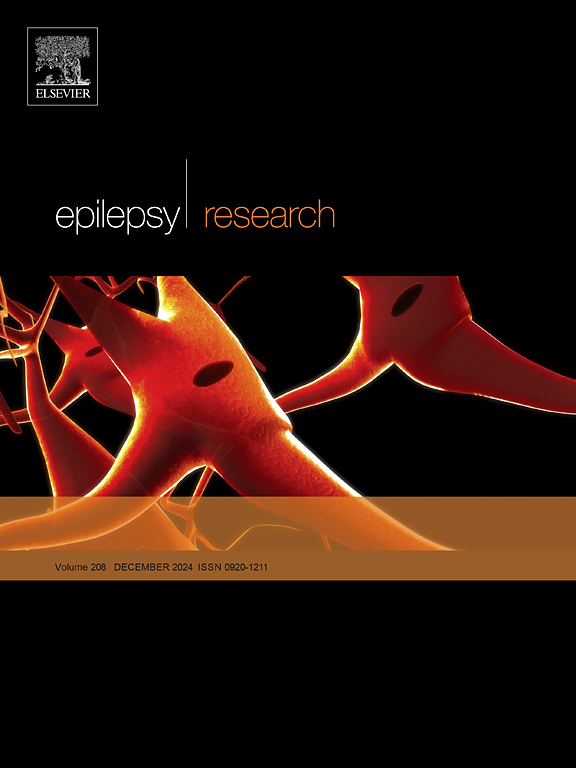Social determinants of health and healthcare utilization in veterans with post-traumatic epilepsy
IF 2
4区 医学
Q3 CLINICAL NEUROLOGY
引用次数: 0
Abstract
Objective
Patients with post-traumatic epilepsy (PTE) are at an increased risk of adverse outcomes, and utilization of specialty care is important to manage symptoms. We examined the relationship between social determinants of health (SDoH) and healthcare utilization in Veterans with PTE (VWPTE).
Methods
Data were collected from the Veterans Affairs (VA) Corporate Data Warehouse administrative data. SDoH data were derived from ICD-10-CM codes, and area deprivation index (ADI) was based on patient zip code. Utilization measures included neurology encounters, comprehensive epilepsy care, neuroimaging, and seizure-related emergency care. Logistic and Poisson regressions were used to model the effect of demographics, epilepsy characteristics, patient comorbidities, and SDoH on utilization measures.
Results
There were 6732 VWPTE who met inclusion criteria. Increased ADI quartile (i.e. higher area deprivation) relative to the first quartile was strongly predictive of decreased utilization, including fewer VA general neurology clinic visits (second quartile IRR=0.926, 95 % CI 0.866, 0.990, p = 0.024; third quartile IRR=0.866, 95 % CI 0.812, 0.925, p < 0.001; fourth quartile IRR=0.745, 95 % CI 0.690, 0.804, p < 0.001), epilepsy specialty care (third quartile OR=0.594, 95 % CI 0.485, 0.729, p < 0.001; fourth quartile OR=0.306, 95 % CI 0.235, 0.395, p < 0.001), MRI studies (fourth quartile OR=0.761, 95 % CI 0.610, 0.946, p = 0.014) and lower EEG usage (fourth quartile OR=0.665, 95 % CI 0.532, 0.830, p < 0.001). Additional SDoH were inconsistently correlated to utilization.
Conclusion
Higher area deprivation predicted lower healthcare utilization in VWPTE across several metrics of specialized epilepsy care and neuroimaging, though individual SDoH based on ICD-10-CM codes were inconsistently correlated to utilization.
创伤后癫痫退伍军人健康和医疗保健利用的社会决定因素
目的:创伤后癫痫(PTE)患者不良结局的风险增加,专科治疗对控制症状很重要。我们研究了PTE退伍军人健康社会决定因素(SDoH)与医疗保健利用之间的关系。方法数据来源于退伍军人事务(VA)公司数据仓库的管理数据。SDoH数据来源于ICD-10-CM编码,区域剥夺指数(ADI)基于患者的邮政编码。利用措施包括神经内科就诊、癫痫综合护理、神经影像学和癫痫相关急诊护理。使用Logistic和泊松回归来模拟人口统计学、癫痫特征、患者合并症和SDoH对利用措施的影响。结果符合纳入标准的VWPTE 6732例。相对于第一个四分位数增加的ADI四分位数(即更高的面积剥夺)强烈预测使用率下降,包括VA普通神经病学门诊就诊次数减少(第二个四分位数IRR=0.926, 95 % CI 0.866, 0.990, p = 0.024;第三四分位数IRR=0.866, 95 % CI 0.812, 0.925, p <; 0.001;第四四分位数的IRR=0.745, 95 % CI 0.690, 0.804, p <; 0.001),癫痫专科护理(第三四分位数OR=0.594, 95 % CI 0.485, 0.729, p <; 0.001;第四象限或= 0.306,95 % CI 0.235, 0.395, p & lt; 0.001),核磁共振研究(第四象限或= 0.761,95 % CI 0.610, 0.946, p = 0.014)和较低的使用脑电图(第四象限或= 0.665,95 % CI 0.532, 0.830, p & lt; 0.001)。额外的SDoH与利用率的相关性并不一致。结论在癫痫专科治疗和神经影像学的几个指标上,较高的区域剥夺预示着VWPTE患者较低的医疗保健利用率,尽管基于ICD-10-CM代码的个体SDoH与利用率的相关性并不一致。
本文章由计算机程序翻译,如有差异,请以英文原文为准。
求助全文
约1分钟内获得全文
求助全文
来源期刊

Epilepsy Research
医学-临床神经学
CiteScore
0.10
自引率
4.50%
发文量
143
审稿时长
62 days
期刊介绍:
Epilepsy Research provides for publication of high quality articles in both basic and clinical epilepsy research, with a special emphasis on translational research that ultimately relates to epilepsy as a human condition. The journal is intended to provide a forum for reporting the best and most rigorous epilepsy research from all disciplines ranging from biophysics and molecular biology to epidemiological and psychosocial research. As such the journal will publish original papers relevant to epilepsy from any scientific discipline and also studies of a multidisciplinary nature. Clinical and experimental research papers adopting fresh conceptual approaches to the study of epilepsy and its treatment are encouraged. The overriding criteria for publication are novelty, significant clinical or experimental relevance, and interest to a multidisciplinary audience in the broad arena of epilepsy. Review articles focused on any topic of epilepsy research will also be considered, but only if they present an exceptionally clear synthesis of current knowledge and future directions of a research area, based on a critical assessment of the available data or on hypotheses that are likely to stimulate more critical thinking and further advances in an area of epilepsy research.
 求助内容:
求助内容: 应助结果提醒方式:
应助结果提醒方式:


